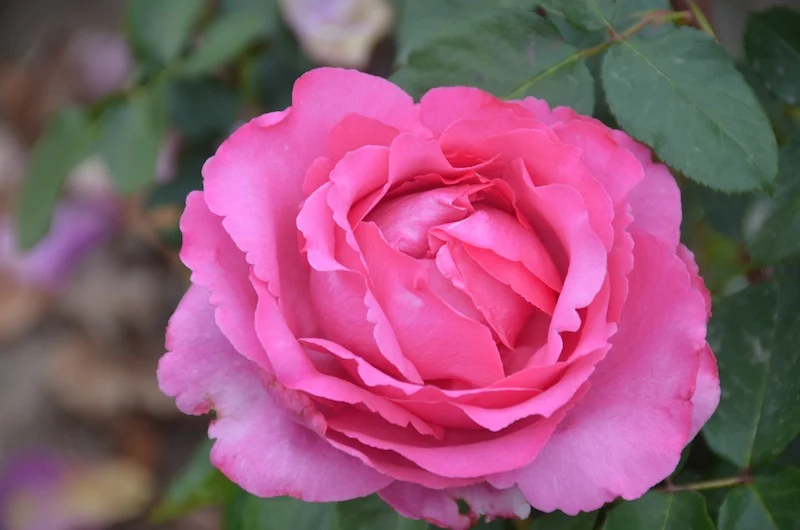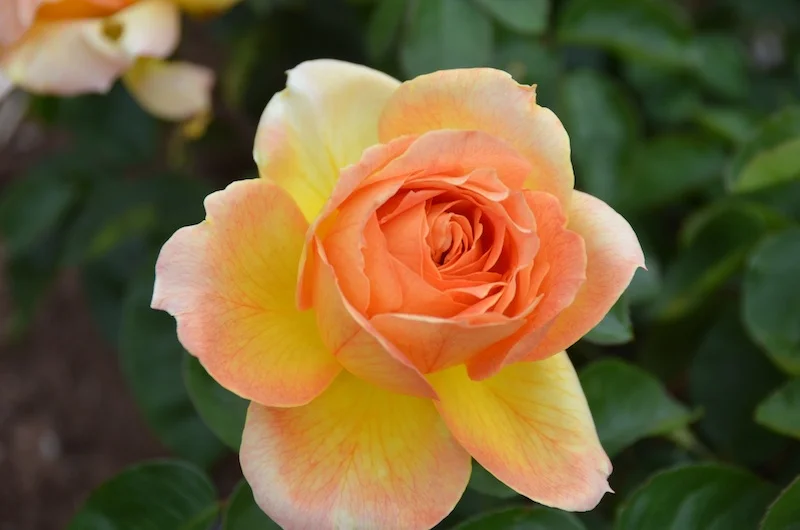Thoughts on the Scent of a Rose
Roses give us a multitude of pleasure. Color, shape, and fragrance are just a few reasons why roses are so captivating. Of course, history, mysticism, and magic are also part of their charm. We, here at the farm, are infatuated with fragrance. No other flower gives us both the potency and variety of fragrance that the rose does.
Rose fragrance varies with the weather and time of day. The strongest fragrance is evident on mild and somewhat humid mornings (when bees are pollinating). This fades or changes over the course of the day as the intensity of the sun increases. With intense heat, the rose essential oils begin to evaporate from the petals. The thinner the petals, the more fragrance pores the rose has. The more petals a rose has, the more fragrant it will be. Spending time in the garden is especially gratifying just before noon. Typically there is a little warmth from the sun and the petals have begun to release their oils.
Many modern roses lack fragrance. In the late 20th century, a trend driven by rose shows and exhibitors in the USA, called for roses to be bred for color, shape, and vase longevity. Fragrance in many varieties was sacrificed for strong straight stems, high pointed centers, and longer vase life. This trend has continued from the late 1960’s to present day. Fortunately, rose lovers are demanding fragrant roses once again! Over the past 25 years, this desire has increased and vase life now plays second fiddle to fragrance. Fragrance genetics are back on the map and hybridizers are once again breeding for scent.
Unfortunately, many consumers today still demand specific color, perfect bloom shape, and lengthened vase life. Imported roses grown in controlled environments can have these characteristics and can be grown and shipped economically but at a yet to be determined cost to the environment. Fortunately, the pendulum is swinging, and we now have many clients who are focused on using LOCAL product, grown sustainably and/or organically. These clients happily embrace the quirky imperfections of roses grown in the garden.
Happy, we are for the older rose varieties, which have been cherished for their fragrance for centuries – European Damask, Galicas, and Centifolias, plus European and even some older American varieties. Visitors on our rose farm tours are often pleasantly surprised to not only find fragrance but experience the different fragrance families that exist among roses. Spices, citrus, berries, other fruits and traditional damask are some of the many fragrances featured on our tours.
Rose fragrances cover a wide spectrum – Mojave = nutmeg-tinged; Lemon Spice = citrusy; Liv Tyler = berry rich. David Austin is often credited with the commercial comeback of the flower’s fragrance and has contributed some unusual scents of his own -- Myrrh in Fair Bianca and Tamora; honey-vanilla in ‘Jude the Obscure’
Once flowers are cut and removed from their food supply, their scent dissipates. But, if snipped, hydrated, and brought indoors before the sun is at it’s peak (around noon), they will retain their potency, sometimes scenting an entire room.
Here are just a few roses with corresponding fragrance values:
- Lady Banksia – violet
- White Rugosa – old-rose scent with hint of clove
- Paul Neyron – old-rose scent
- Mme. Plantier – old-rose scent
- Autumn Damask - old-rose
- Memorial Day - old-rose
- Crocus Rose - tea
- Louise Odier – tea
- Golden Celebration – fruit and tea
- Sutter’s gold – lemon
- Fragrant Cloud – clove and nutmeg
- Florence Delattre – lilac
- Outta the Blue – pepper, cassis
- Abraham Darby – fruit
- Chris Evert - fruit
- Fair Bianca – myrrh
- Gertrude Jekyll – old-rose scent
- Rosarium Uetersen – Citrus
- Lady Hillingdon – honey
- Liv Tyler – berry
- Yves Piaget – old-rose scent with berry
- Sombreuil – green apple
- Jean Giono – clove
- Double-Delight – citrus
- Red Eden – berry
Fragrance, just as color and disease resistance, can be an attribute of a particular lineage and the associated hybridizer. As we begin to recognize fragrance, we can further learn to identify roses and their parentage.
Tip: to fully appreciate and remember a fragrance, one must smell a rose (up close and personally) for a full 30 seconds. It takes this long for a fragrance to imprint on the brain. Any less time, and the fragrance is not likely to be recognized in the future.





